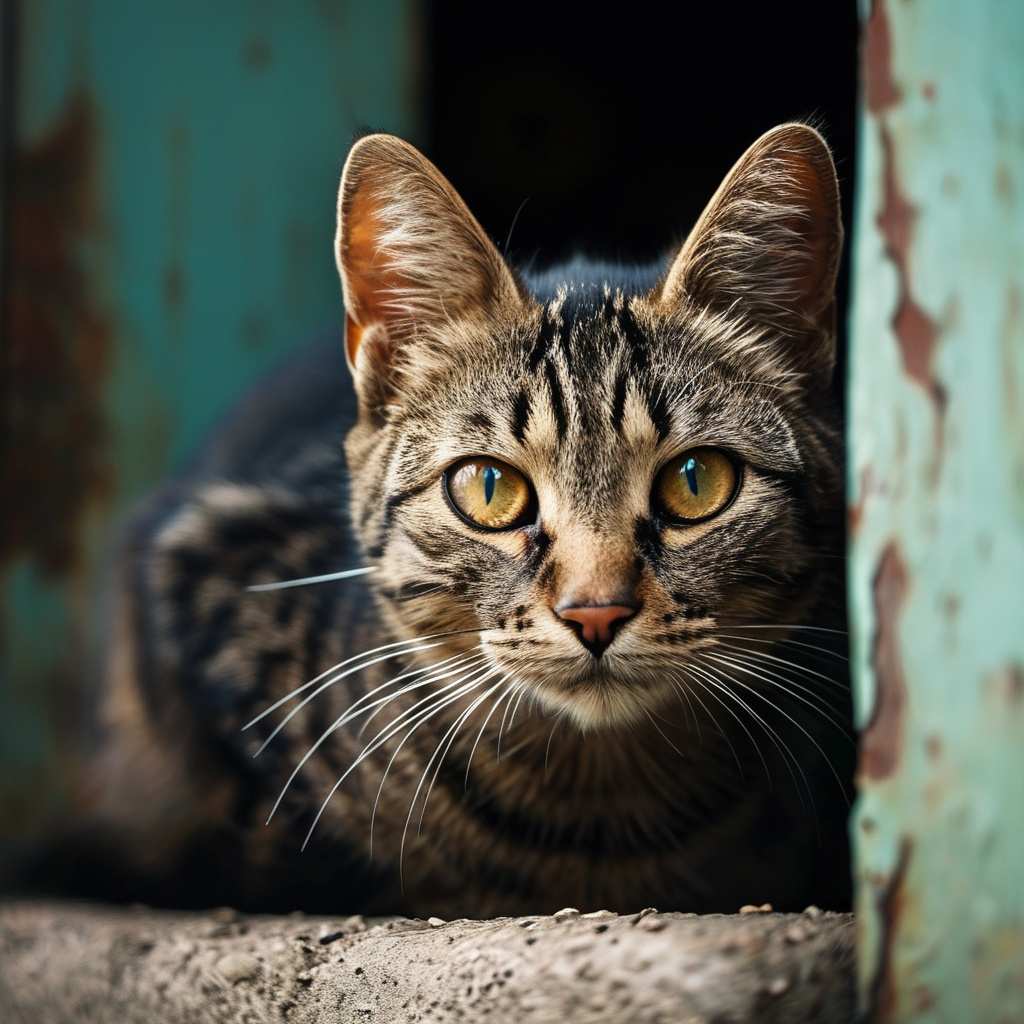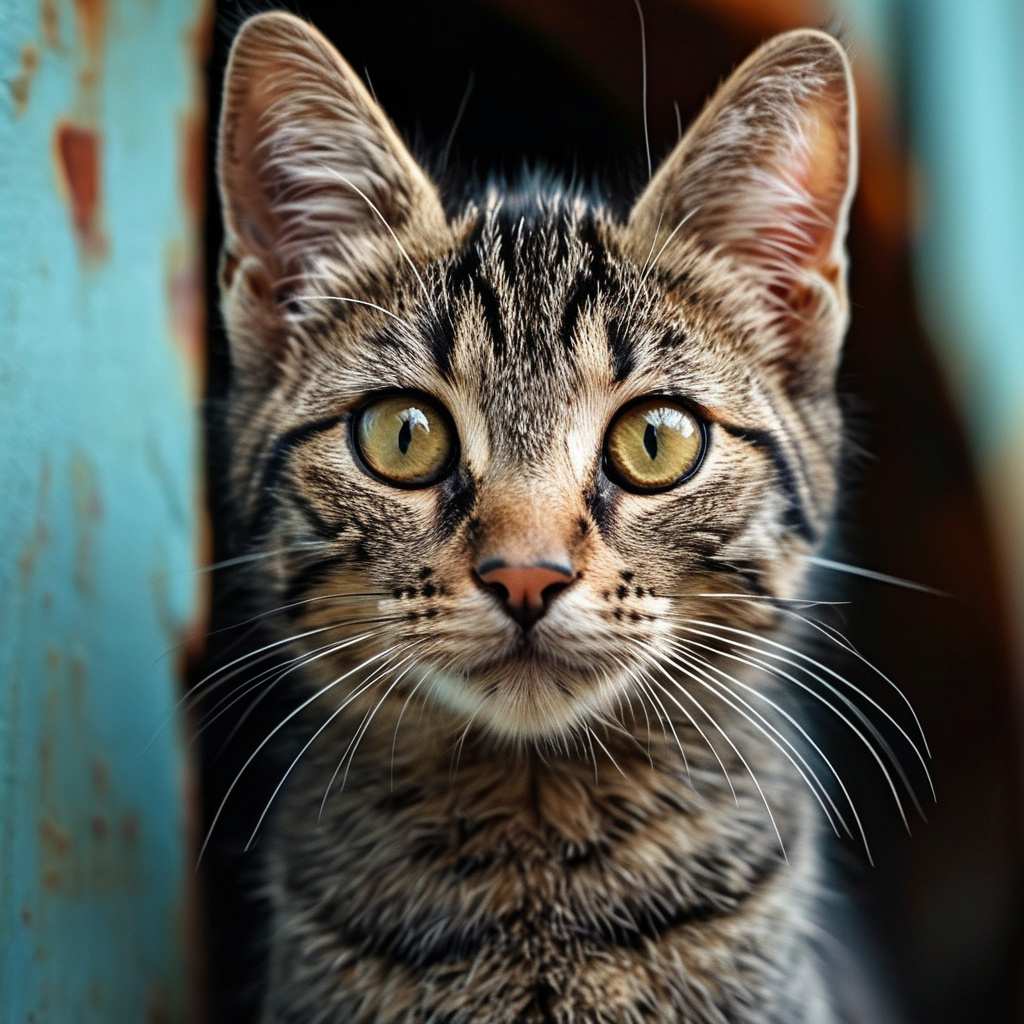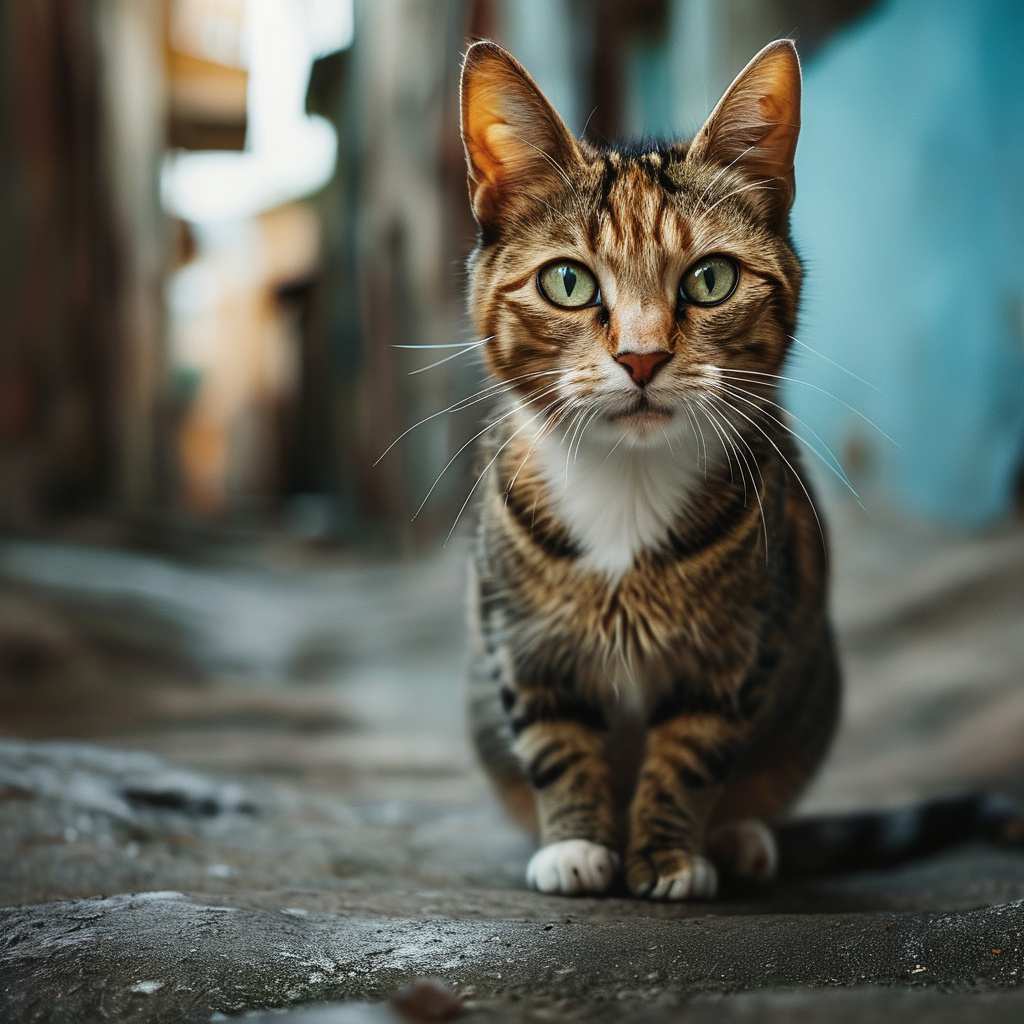 Introduction:
Introduction:
Deciding whether to let your cat outside is a significant choice, especially in urban areas where dangers abound. Cats that roam freely face risks such as car accidents, attacks from other animals, and exposure to deadly diseases. Vaccinations can protect against some illnesses, but viruses like FIP, FIV, and FeLV pose a serious threat, particularly for outdoor cats. This article explores these infectious diseases and offers insight into how to care for indoor cats, helping pet owners create a safe, enriching environment that promotes both health and happiness for their beloved companions.
Should we let the cat outside?
Related Post: Caring for Your Pregnant Cat: Essential Tips for a Healthy Pregnancy and Kittens
It’s worth mentioning that cats in urban areas are better off staying indoors. There are more risks for a cat that runs around freely in a city or village than benefits. Just a few moments of freedom can end in tragedy. There are a few risks involved, too. For example, the cat could be attacked by another animal or even by a person. It could also be hit by a car. And there are diseases that can be transmitted to cats from other animals or people, which can be fatal. Just because a cat keeps coming back doesn’t mean he’ll come back next time or come back healthy. If we do decide to get a house cat, it’s best to create a loving, warm, non-exhausting home that gives us confidence that our beloved pet will stay with us for years to come.
If your cat doesn’t go out, you could always let it out onto a balcony or even into the garden, where you can set up an aviary. The cat will love having access to fresh air.
Related Post: Understanding Allergies in Dogs and Cats: Causes, Symptoms, and Treatment
 On the topic of diseases, it’s probably common knowledge that cats need to be vaccinated. Vaccinations are the best way to prevent infectious diseases. Most cats get vaccinated against some basic diseases, but only against the viruses that cause cat flu and panleukopenia (also called cat typhoid). Unfortunately, some cats are vaccinated out of the official schedule, so their immunity against these diseases may be compromised.
On the topic of diseases, it’s probably common knowledge that cats need to be vaccinated. Vaccinations are the best way to prevent infectious diseases. Most cats get vaccinated against some basic diseases, but only against the viruses that cause cat flu and panleukopenia (also called cat typhoid). Unfortunately, some cats are vaccinated out of the official schedule, so their immunity against these diseases may be compromised.
It’s worth noting that not everyone is aware of other infectious diseases that are particularly common in outgoing cats, such as FIP, FIV, and FeLV. Can someone explain what these abbreviations mean?
FIP stands for “Feline Infectious Peritonitis.” Unfortunately, this is currently an incurable disease, and treatment can only slow its development. The latest research suggests that some cats are more likely to be infected with the virus because of their genetics. The disease is caused by some of the most common viruses. If the virus mutates or the cat’s immune system is compromised in some way (genes are also mentioned here), 5 to 10% of cats can develop infectious peritonitis.
Related Post: The Unique Charm of Thai Cats: A Return to the Original Siamese Look
 Feline immunodeficiency virus (FIV) in cats
Feline immunodeficiency virus (FIV) in cats
It’s called FIV for a reason, just like HIV. FIV is the equivalent in cats. In cats infected with the virus, the immune system is weakened and becomes more likely to get other infections. Even seemingly harmless illnesses can become a threat to their lives. Cats infected with FIV may not show any symptoms for several years, but it will eventually make itself known.
FIV might sound like a death sentence, but you can still live with the infected cat. Just remember that it’ll be sicker and you’ll only have between two and five years with it.
The virus is transmitted through saliva, and the most common way for it to be transmitted is through a bite wound. This is why cats are most often infected because they get caught up in territorial fights, especially if they’re not neutered. The lowest risk of infection is for non-emergent cats.
People often ask about FIV-infected cats and other cats at home, too. Research shows that in a cat-owning community where there is no cat fighting, FIV infection of other cats is almost zero. This makes me wonder whether it’s worth risking the life of a healthy cat, because we’ll never be sure that there won’t be a situation that could lead to infection.
Just a quick note to say: If your cat is diagnosed with FIV, it’s important to avoid sexual contact with other cats. While this isn’t the main way the virus is transmitted (it’s usually spread through bites), it’s still a potential source. It’s not a given, but an infected kitten can pass the virus on to its offspring.
 FIV symptoms are pretty unusual. At first, you’ll probably notice swelling of the lymph nodes, often accompanied by fever. Since it’s not a permanent condition, this might be overlooked. Another symptom is that the cat’s health starts to decline. Once the virus is present, your cat will experience periods of illness and relative health.
FIV symptoms are pretty unusual. At first, you’ll probably notice swelling of the lymph nodes, often accompanied by fever. Since it’s not a permanent condition, this might be overlooked. Another symptom is that the cat’s health starts to decline. Once the virus is present, your cat will experience periods of illness and relative health.
There might also be other signs of immunosuppression, like:
It’s not uncommon for cats infected with FIV to lose weight more slowly and to develop more cancerous growths.
To diagnose FIV, we run a few tests on your cat’s blood. Right now, most clinics have rapid detection tests that give results in about 45 minutes. Other methods involve sending blood for immunological tests. You’ll usually get the results within a few days. Unfortunately, even if your cat is infected, the disease itself may not show up the first time. If your vet thinks your cat might be unwell, they might offer to repeat the test in a few weeks.
Unfortunately, there is still no effective treatment for FIV. Even so, a cat infected with this virus can still live a pretty normal life as long as it doesn’t go outside. It’s also a good idea to spay or neuter your cat to help reduce the risk of virus transmission. As with humans, cats should be fed a balanced diet. It’s best to avoid all raw products that could cause food poisoning in FIV cats.
It’s a good idea to see a vet every six months or so to check your cat’s general health. This should include a blood and urine test, weight recording, and a look at the gums, teeth, lymph nodes, and skin. Even if our cats are healthy, we should still get them checked out regularly.
There isn’t yet a clear plan for supportive therapy for FIV, but there are some promising new medications in the works.
The best way to prevent the virus is to avoid exposure. In practice, this means keeping our animal away from cats that might bite him. If you have indoor cats, there’s less risk of disease if each new cat has been tested for FIV. Unfortunately, many cats infected with the virus are diagnosed quite late. This makes it more likely that the virus will be passed on.
The virus isn’t very resilient in the face of environmental factors. It dies pretty quickly in most situations (saliva on grass, blood stains on sidewalks, etc.).
It’s not uncommon for FIV-positive cats to also have FeLV. For this reason, it’s a good idea to disinfect their bowls, bedding, litter trays, and toys. This is particularly important if you’re bringing another cat into the house. Any new cat should have had the usual vaccinations against other infectious diseases.
It’s not a risk to humans.
Even though it’s similar to HIV, the feline virus doesn’t pose a threat to humans because it’s species-specific and only affects cats.
FeLV stands for feline leukemia virus. It’s one of the most common viruses in cats, and about 3% of cats are infected. Cats infected with FeLV can infect other cats, and, like FIV, they can’t survive for long outside of the cat’s body. The virus is spread through bodily fluids like saliva, nasal discharge, urine, feces, and breast milk. It’s most commonly transmitted through direct contact and biting, but also through mutual licking of fur. It’s much less common when the same bowl, litter box, and toys are used. It’s also possible for the virus to be passed from an infected mother to her kittens. Just like FIV, FeLV can’t survive for long outside of your cat’s body.
So, the group most at risk is cats that come into contact with other cats and kittens from infected mothers, who are particularly susceptible to infection because they’re still young.
Clinical signs
The FeLV virus affects your cat in a number of ways, similar to the way the FIV virus does. It’s the most common cause of cancer; it messes with your cat’s blood circulation, and it makes them more susceptible to infections.
The disease doesn’t show any symptoms in the early stages. This disease can last for weeks or even years. However, it doesn’t last forever. When the virus finally breaks out, your cat will experience periods of illness and relative health.
The most common symptoms are:
Your cat may lose their appetite, lose weight, and have poor fur quality. They may also have enlarged lymph nodes, a sustained fever, pale mucous membranes (which may be yellowish in color), gingivitis and periodontitis, skin infections, inflammation of the lower urinary tract, frequent diarrhea, behavioral changes, neurological symptoms, and inflammation in the eyes.
If your vet suspects FeLV, they’ll usually do an initial test at the clinic. You’ll get the results in about 45 minutes, and we’ll know if your cat has FIV.
More advanced testing involves sending a blood sample to a lab for a test that detects viral protein in immune system cells. It also lets us know how far along the infection is and make some predictions.
Treatment and prevention.
While there are treatments that can help reduce the amount of virus in the blood of infected cats, they can have serious side effects or may not produce any results. Unfortunately, there’s no proven and effective way to fight the virus. Treatment involves strengthening the immune system with special medications. In some extreme cases, plasma or even whole blood is transfused.
The best way to prevent FeLV is to avoid contact between a healthy cat and an infected one and to sterilize and neuter the cat. It’s not worth the risk. If a cat gets sick or is hit by a car, it’ll suffer. It’s important to remember that every new kitten in the house should be tested for the leukemia virus beforehand to make sure you don’t endanger the health and life of your other cats. If your cat is sick, don’t make them lonely. They can have other cats in the house, but it’s best if they’re also cats with FeLV.
It’s also a good idea to vaccinate your cat against FeLV as part of the prophylaxis. This vaccine can be given by any vet. It’s also important to remember that this vaccination doesn’t provide 100% protection against the virus and won’t help if the infection has already occurred.
After diagnosis, the average life expectancy is about 2.5 years, which can seem like a death sentence to many caregivers. However, it’s important to remember that most cats diagnosed will live a normal life for some time. Caring for them will be a little more challenging, as a kitten like this requires regular vet visits, a balanced diet, and treatment for possible other health issues, but they are just as loving as any other cat.
Conclusion:
In conclusion, the decision to allow your cat outside should be made with caution, particularly if you live in an urban area. While outdoor exploration may seem natural for cats, the risks of disease, injury, and premature death are significant. Providing an enriched indoor environment, along with regular vaccinations and health checks, ensures your cat remains healthy and safe. For those with cats diagnosed with FIV, FeLV, or FIP, proactive care and preventive measures can extend their life while maintaining their quality of life. Keeping our cats indoors, with controlled outdoor access, is a responsible way to protect their well-being.
FAQs:
- What are the risks of letting a cat outside in urban areas?
Cats are at risk of being hit by cars, attacked by other animals, contracting infectious diseases, or being harmed by humans. - What is FIP, and how does it affect cats?
FIP (Feline Infectious Peritonitis) is a viral disease caused by a mutation of the feline coronavirus. It weakens the immune system and is usually fatal. - Can a cat with FIV live a normal life?
Yes, cats with FIV (Feline Immunodeficiency Virus) can live relatively normal lives as long as they remain indoors, receive regular vet care, and are kept away from other cats to prevent virus transmission. - How is FeLV transmitted between cats?
FeLV (Feline Leukemia Virus) is spread through bodily fluids, such as saliva, urine, and blood. It’s often transmitted via biting, mutual grooming, or from an infected mother to her kittens. - What precautions should I take if I own an FIV or FeLV-positive cat?
Keep your cat indoors, avoid contact with uninfected cats, regularly disinfect their living environment, and ensure frequent vet visits to monitor their health. - Can indoor cats still catch infectious diseases like FIV or FeLV?
While indoor cats are at a much lower risk, it is still possible for them to contract diseases if they come into contact with infected cats or are not properly vaccinated. - Is there a cure for FIV, FIP, or FeLV?
Unfortunately, there is no cure for these viruses. However, with early diagnosis and proper care, a cat’s lifespan can be extended, and its quality of life maintained.
References: